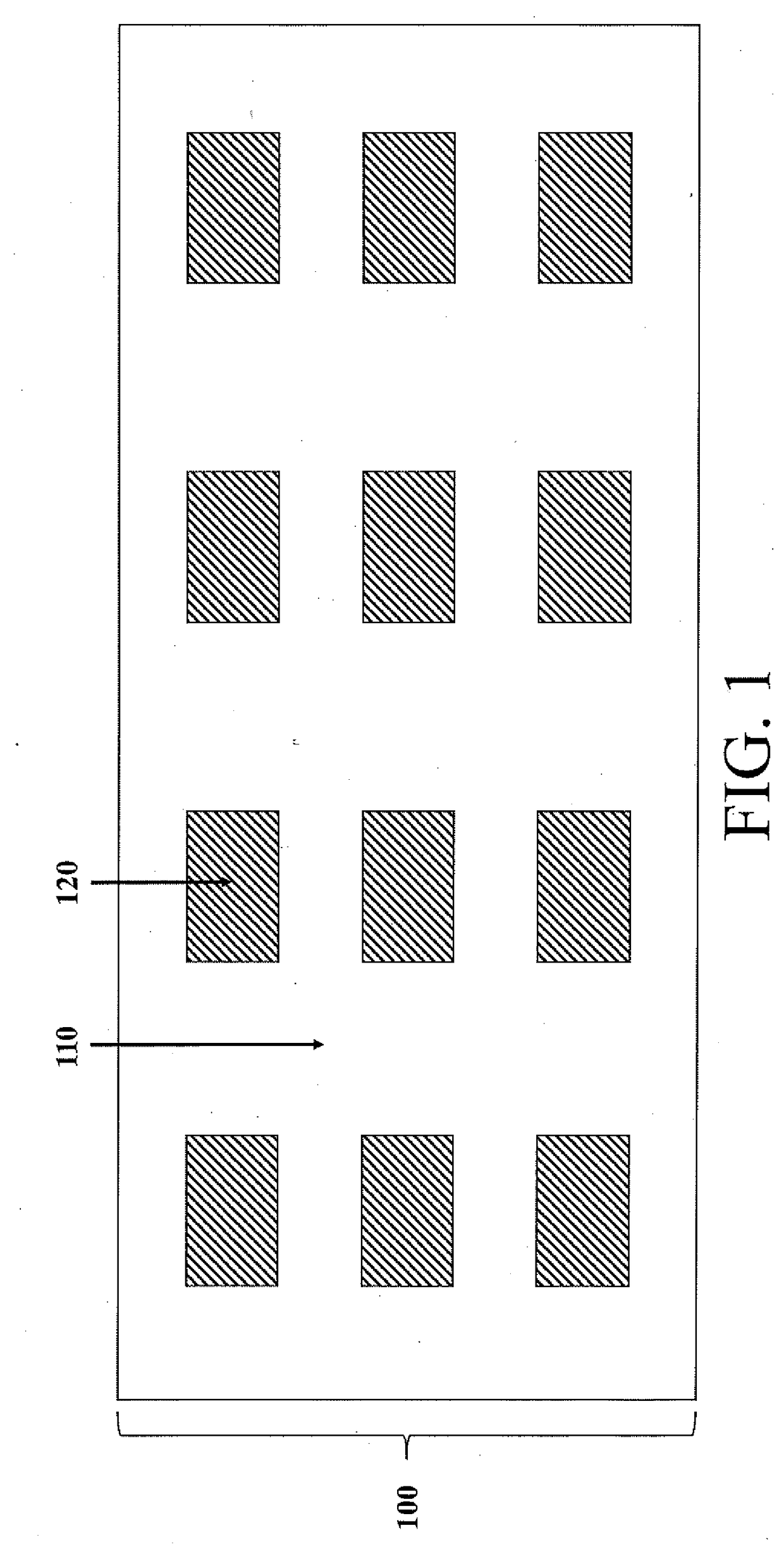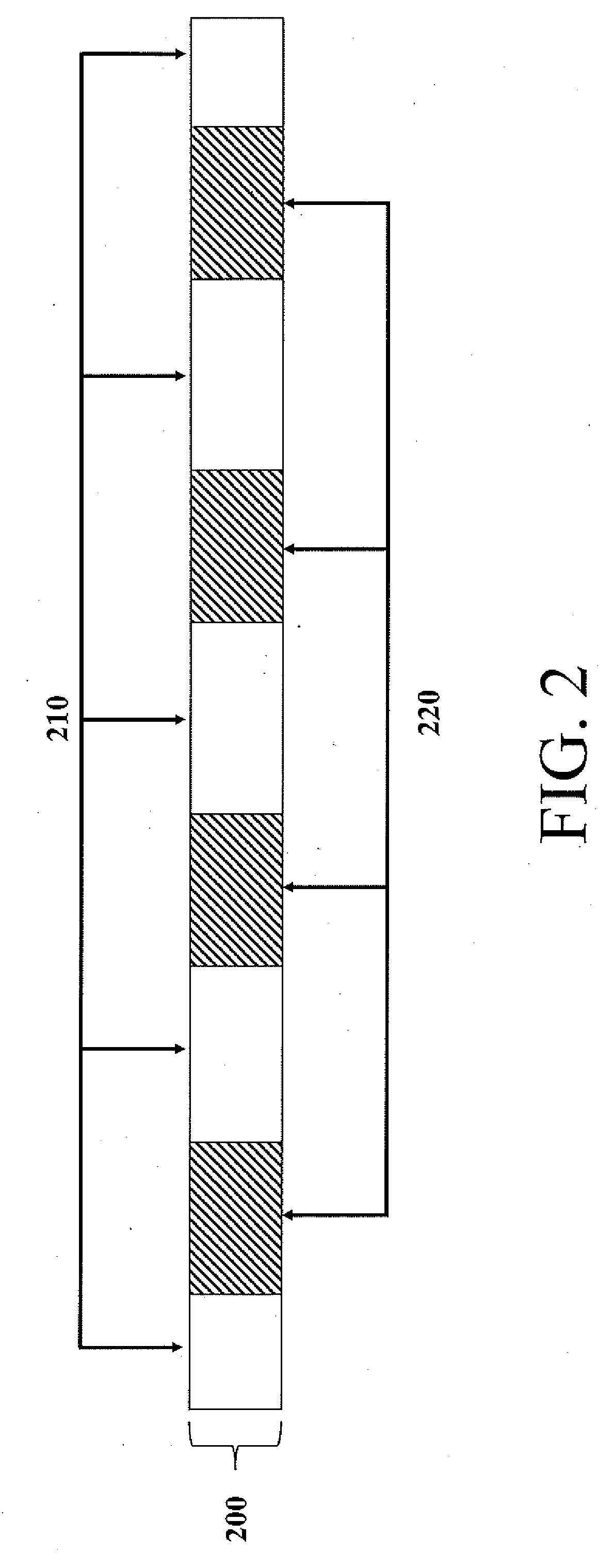Substrates for stretchable electronics and method of manufacture
a technology of electronics and substrates, applied in the direction of printed circuit manufacturing, circuit bendability/stretchability, printed circuit aspects, etc., can solve the problems of limited stretchability of such a device and interfacial problems
- Summary
- Abstract
- Description
- Claims
- Application Information
AI Technical Summary
Benefits of technology
Problems solved by technology
Method used
Image
Examples
example 1
[0037]To a fluid reservoir was added the difunctional acrylate-terminated nematic liquid crystal RM 82 (Synthon) and an almost stoichiometric ratio of n-butylamine. To this solution, 1.5 wt % of the initiator 2,2-Dimethoxy-2-phenylacetophenone was added and the container was sealed, placed into the rotary mixer and mixed at 2350 rpm for 5 minutes. The monomer solution mixture was mounted to a slot-die coating tool and processed into a thin-film atop a carrier substrate with a prepatterned photoaligned dye layer via the slot-die coating technique. A secondary prepatterened photoaligned dye layer was used to cover the deposited material and allow directorate orientation across the thickness of the material. After 120 minutes, the secondary layer was removed and the material atop the carrier substrate was introduced to an ultraviolet (UV) curing oven and exposed to 10 mJ / cm̂2 of 365 nm light to initiate the polymerization, giving the final polymer film. No further spatial patterning is...
example 2
[0038]To a fluid reservoir was added the multifunctional thiol monomer Tris[2-(3-mercaptopropionyloxy)ethyl] isocyanurate (1 mol eq.) and the multifunctional co-monomer Tris(4-hydroxyphenyl)methane triglycidyl ether (1 mol eq.), and the container was sealed. The sealed container was placed into a rotary mixer and mixed at 2350 rotations per minute (rpm) for 5 minutes. The container was removed from the mixer, opened, and 1.5 wt % of the catalyst tripropylamine was pipetted dropwise into the mixed monomer solution at room temperature (about 25° C.). The container was again sealed, placed into the rotary mixer and mixed at 2350 rpm for an additional 5 minutes. Finally, the container was again removed from the mixer, opened, and the organic solvent tetrahydrofuran was added until the final solution was a 92.5% (v / v) solid-fraction monomer solution. The monomer solution mixture was mounted to a slot-die coating tool and processed into a thin-film atop a carrier substrate via the slot-di...
example 3
[0039]A stock solution of poly(ethylene-co-acrylic acid) in xylene (5 v / v%) was mounted to a slot-die coating tool and processed into a thin-film atop a carrier substrate via the slot-die coating technique. Samples were the baked at 80° C. in an oven with dry nitrogen flow for 12 hours. The final film was spatially-patterned using standard semiconductor lithographic processing. Atop the patterned film, an excess of a 1.0 M NaOH solution was introduced and soaked for 60 minutes at room temperature. The solution is then flushed with deionized water and the remaining mask is removed. The polymer network is now a spatially-anisotropic substrate for flexible electronics fabrication, wherein electronic elements that cannot accommodate significant strains can be processed directly atop the sodium-salt regions and stretchable interconnects can be utilized to connect such elements.
[0040]As used herein, a polymer network may include either a covalently or physically linked material consisting...
PUM
| Property | Measurement | Unit |
|---|---|---|
| Young's modulus | aaaaa | aaaaa |
| temperature | aaaaa | aaaaa |
| temperature | aaaaa | aaaaa |
Abstract
Description
Claims
Application Information
 Login to View More
Login to View More - R&D
- Intellectual Property
- Life Sciences
- Materials
- Tech Scout
- Unparalleled Data Quality
- Higher Quality Content
- 60% Fewer Hallucinations
Browse by: Latest US Patents, China's latest patents, Technical Efficacy Thesaurus, Application Domain, Technology Topic, Popular Technical Reports.
© 2025 PatSnap. All rights reserved.Legal|Privacy policy|Modern Slavery Act Transparency Statement|Sitemap|About US| Contact US: help@patsnap.com



